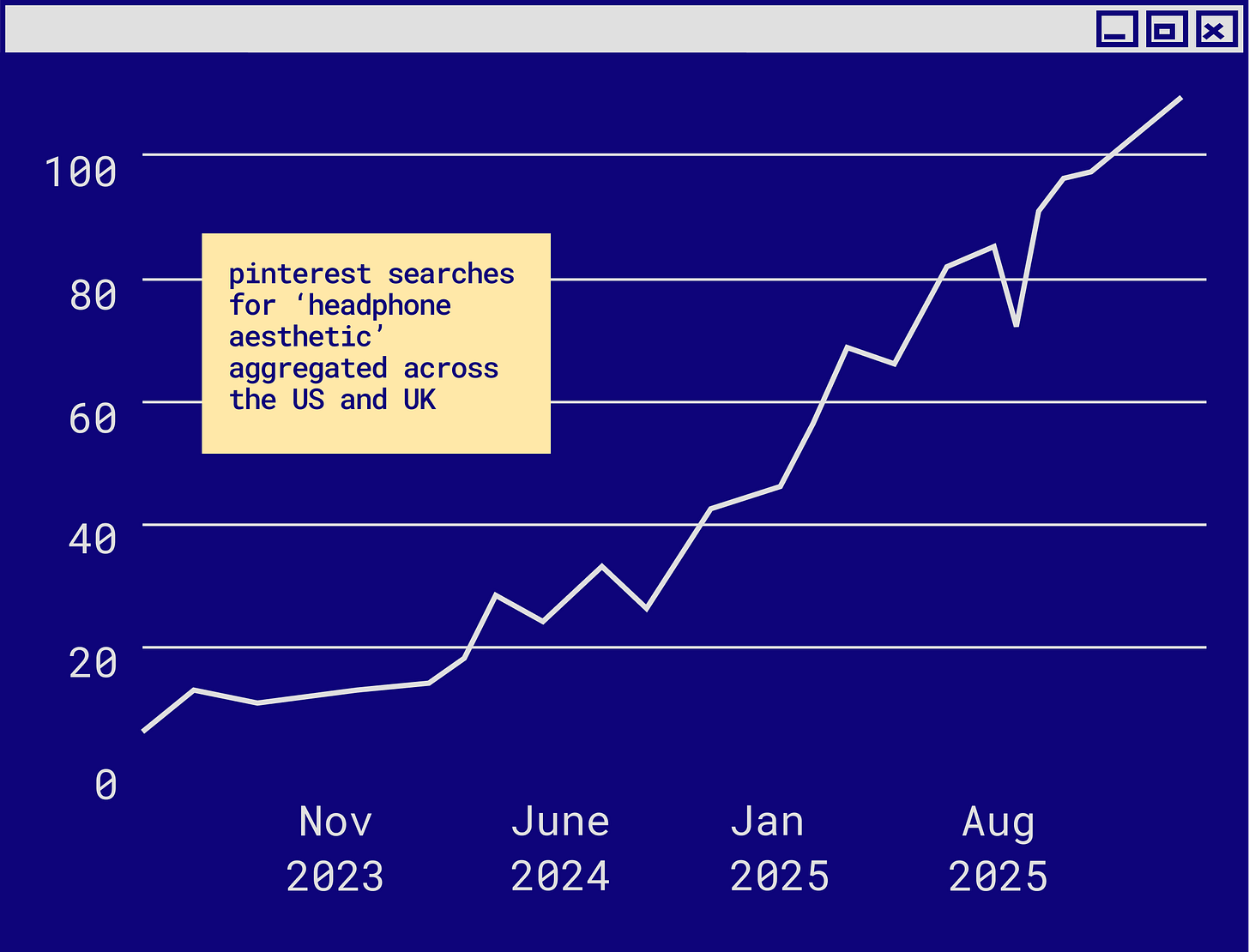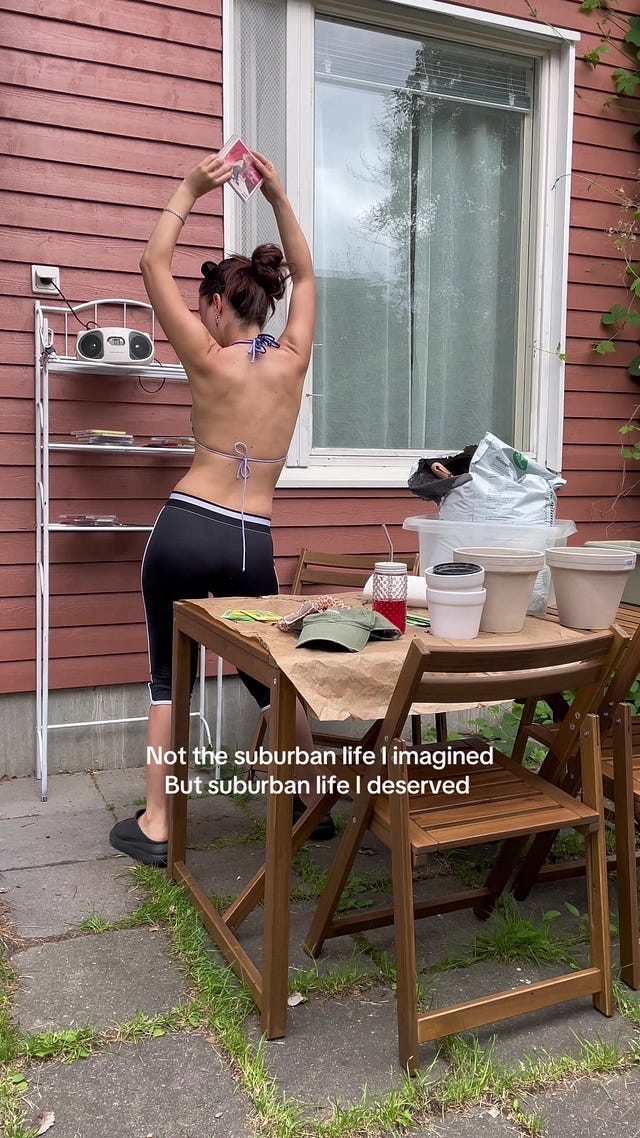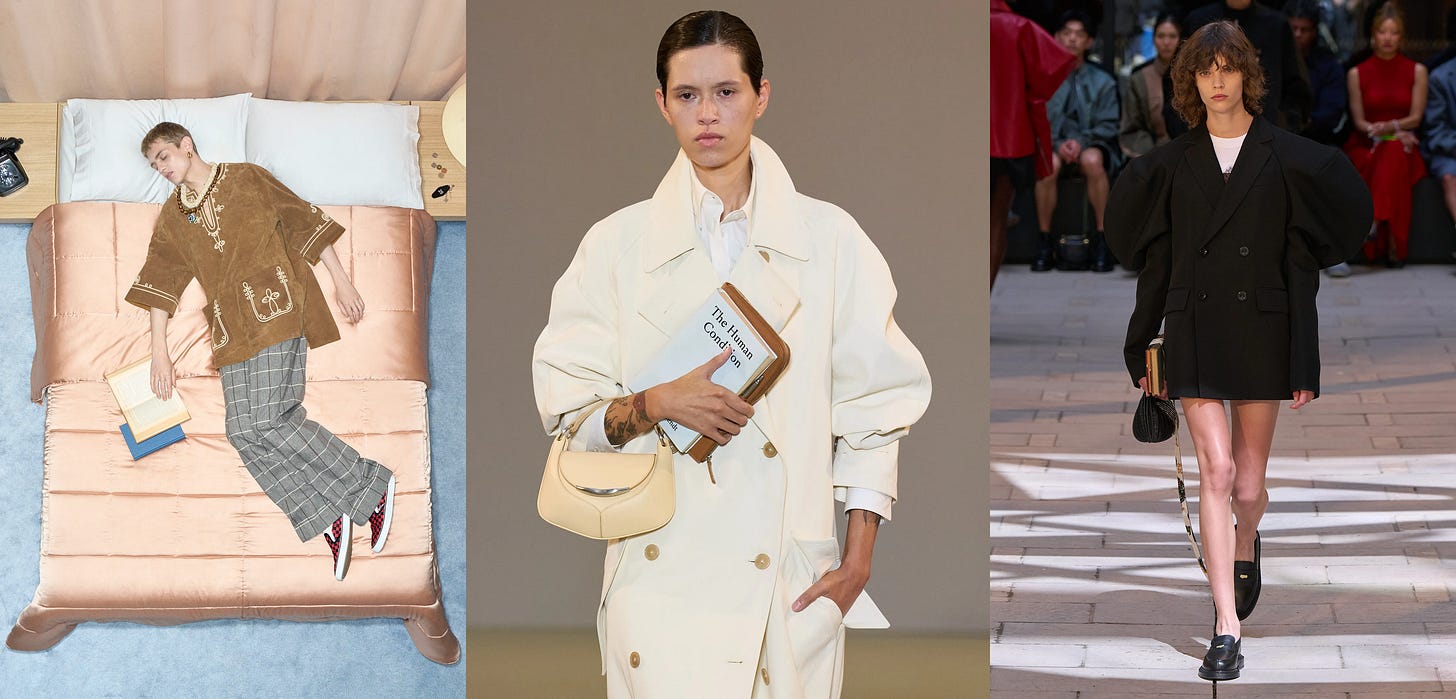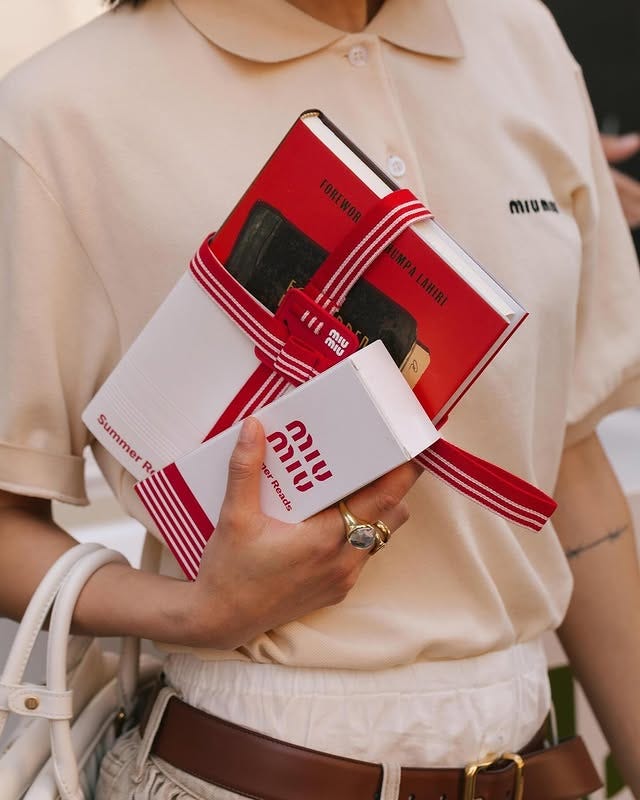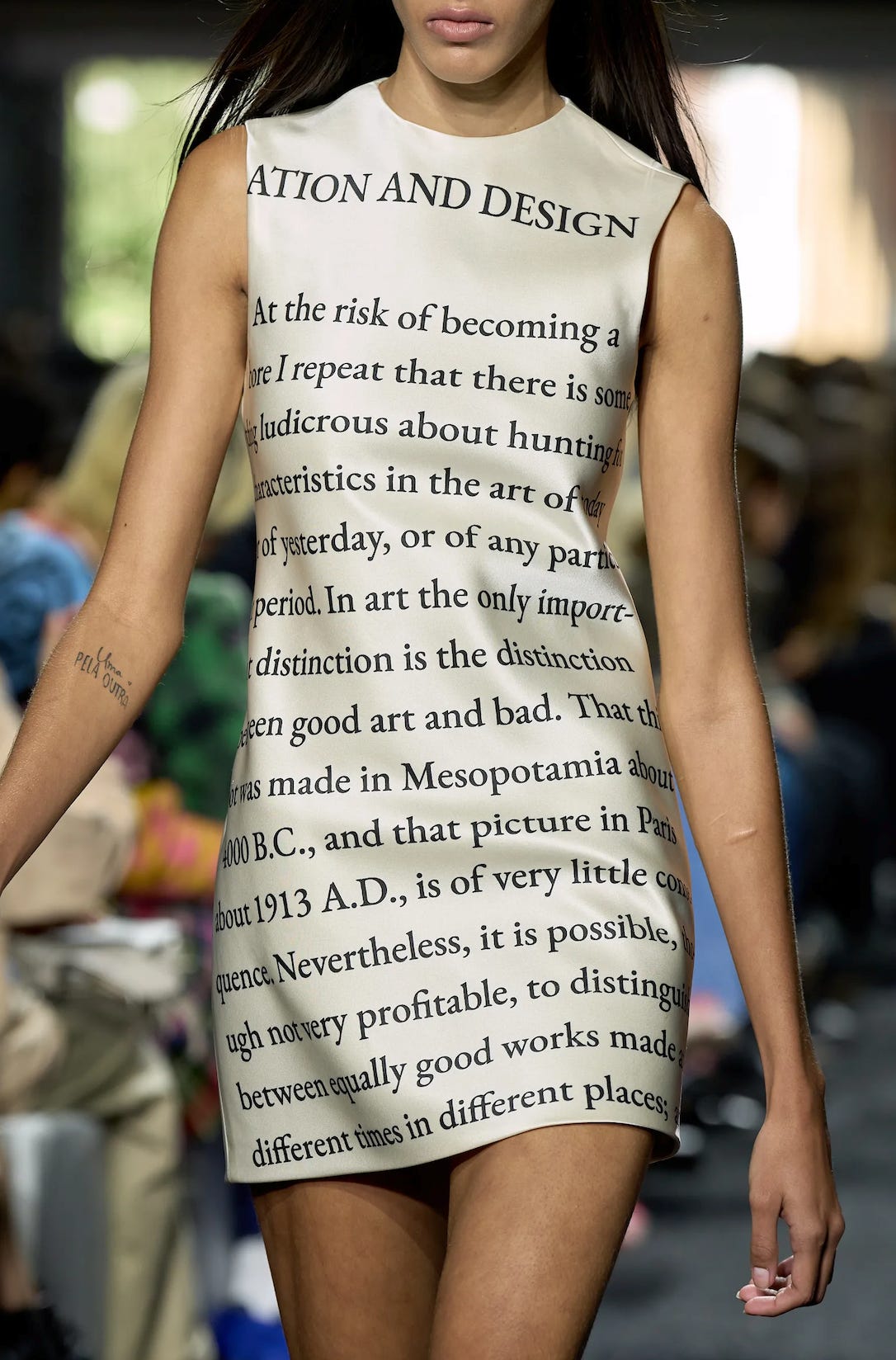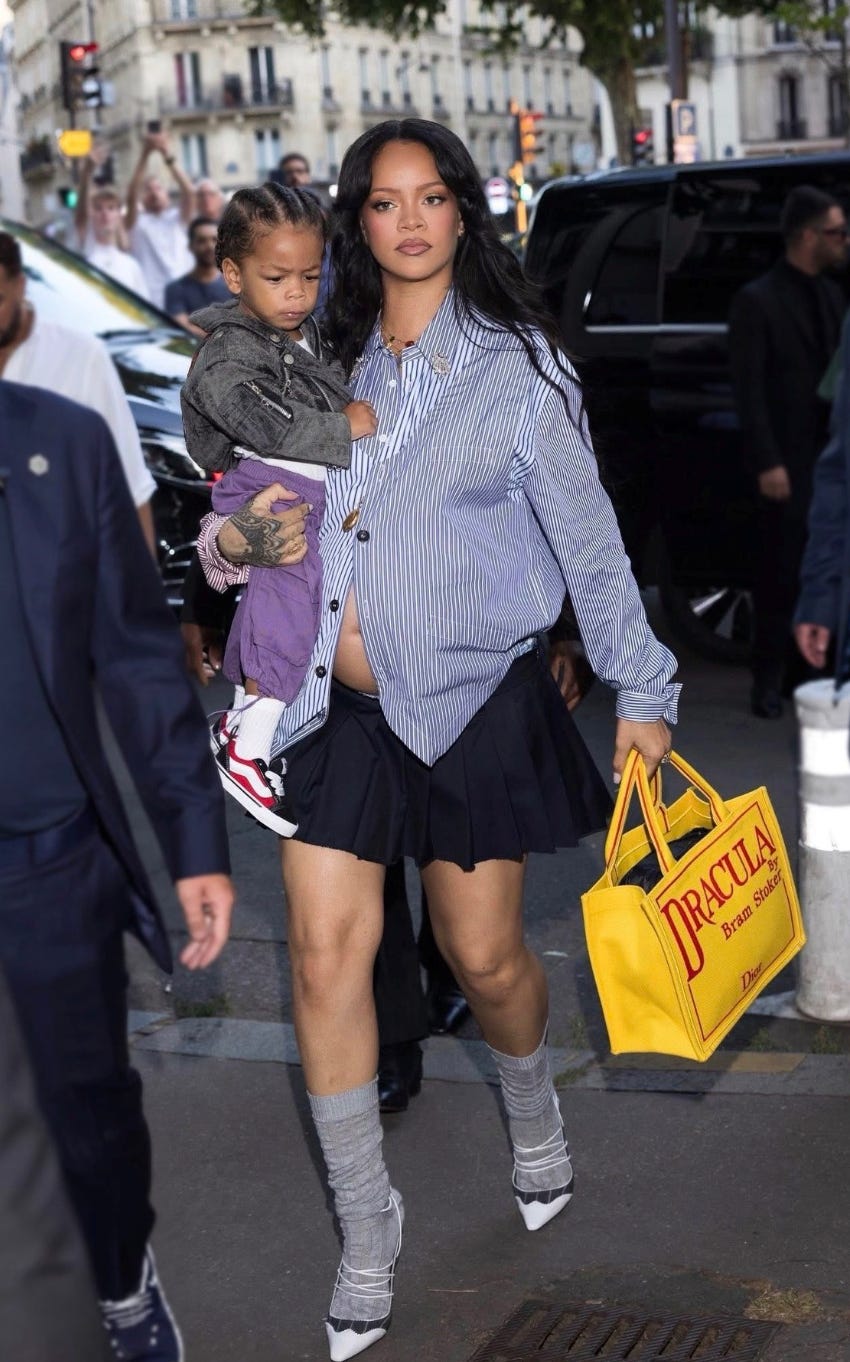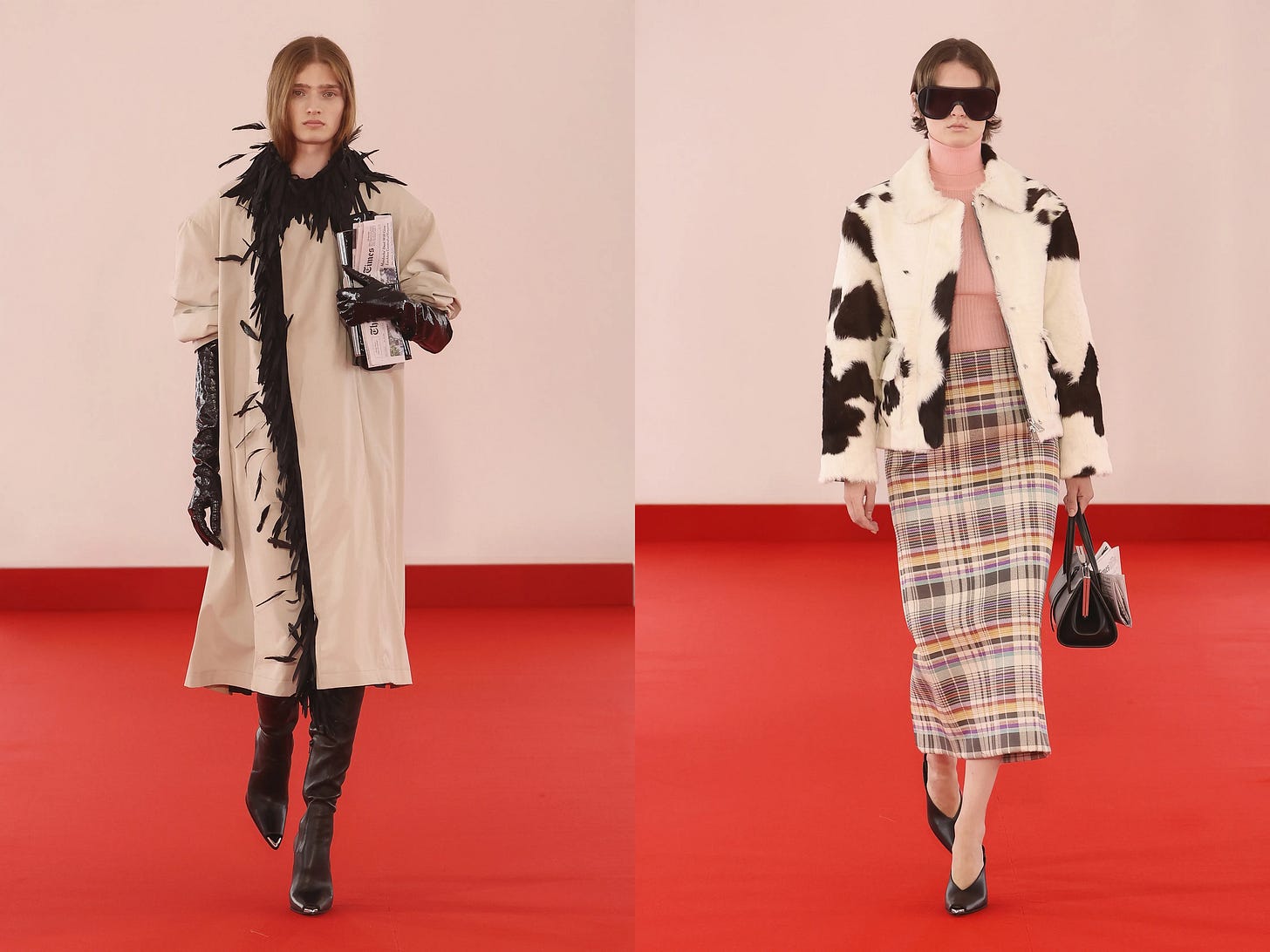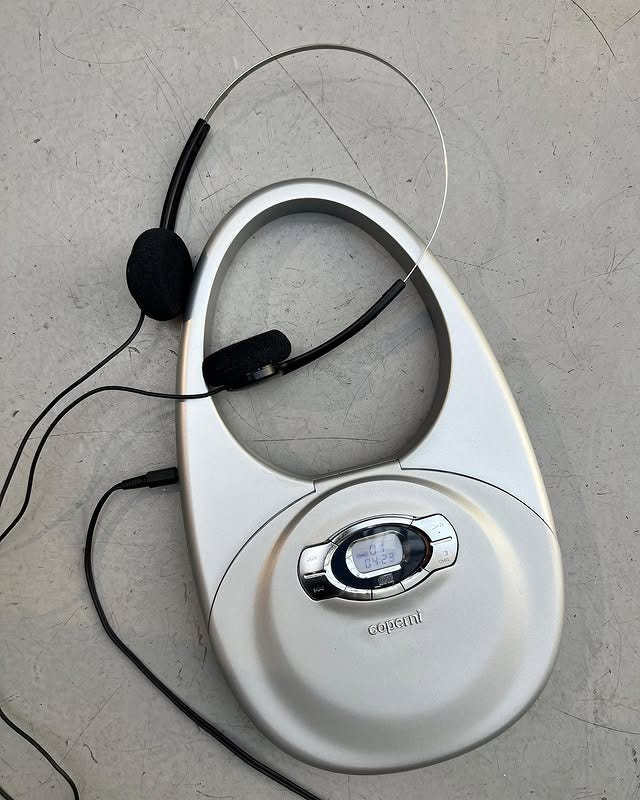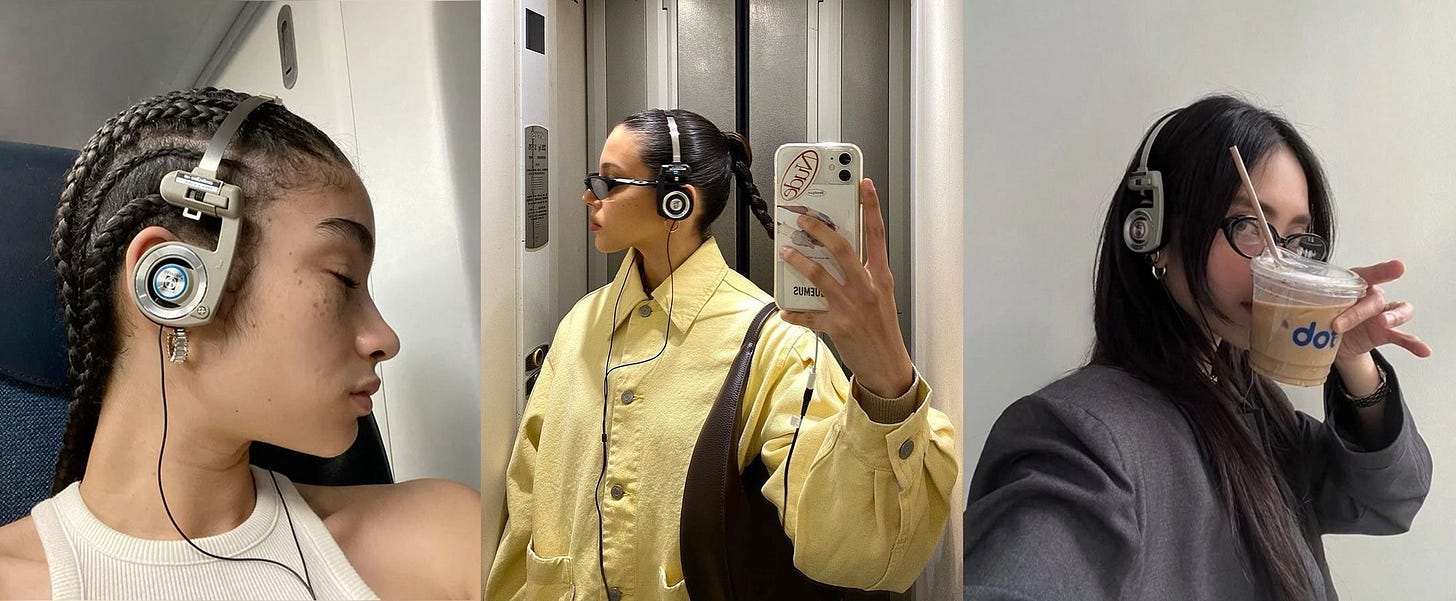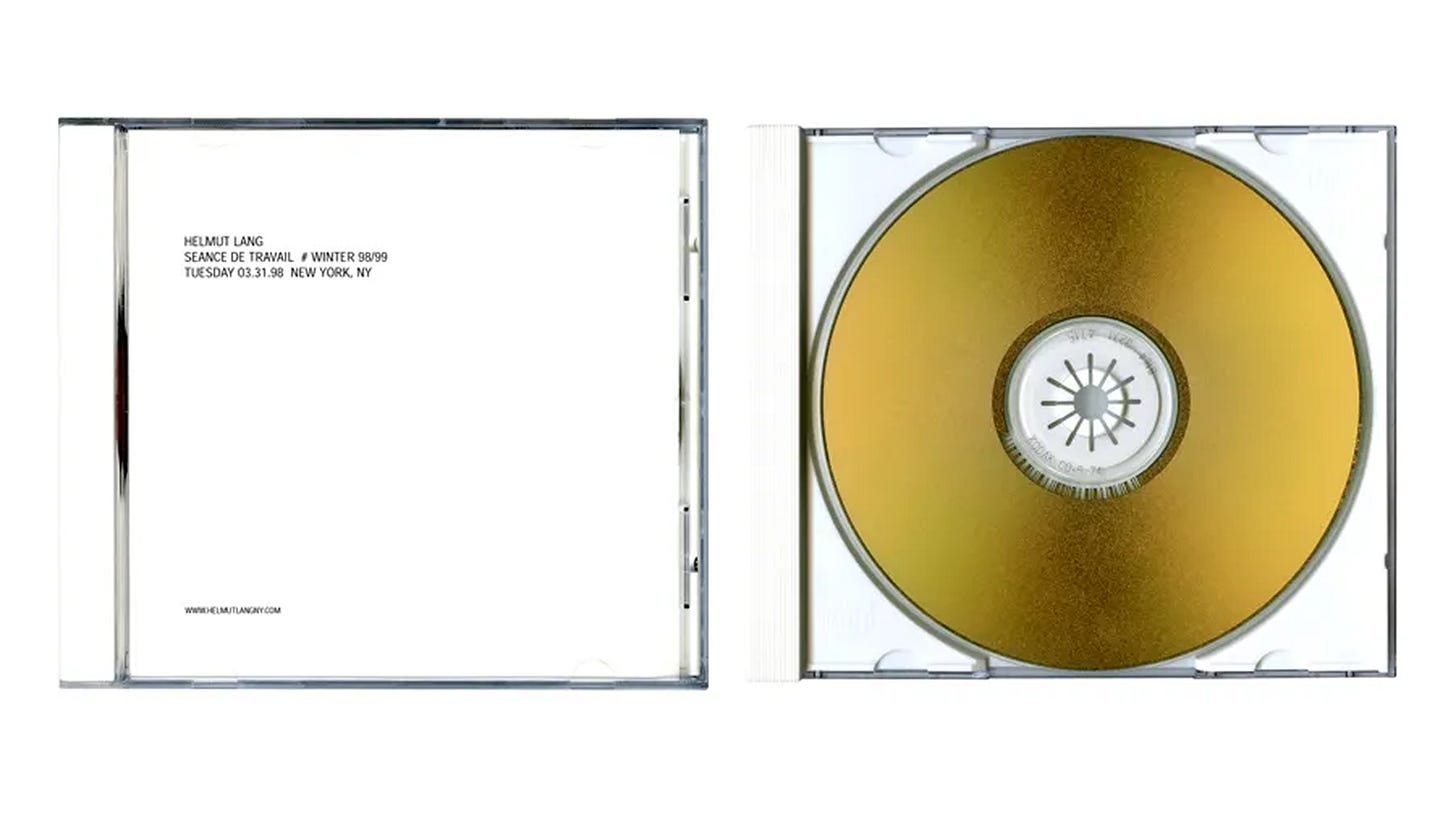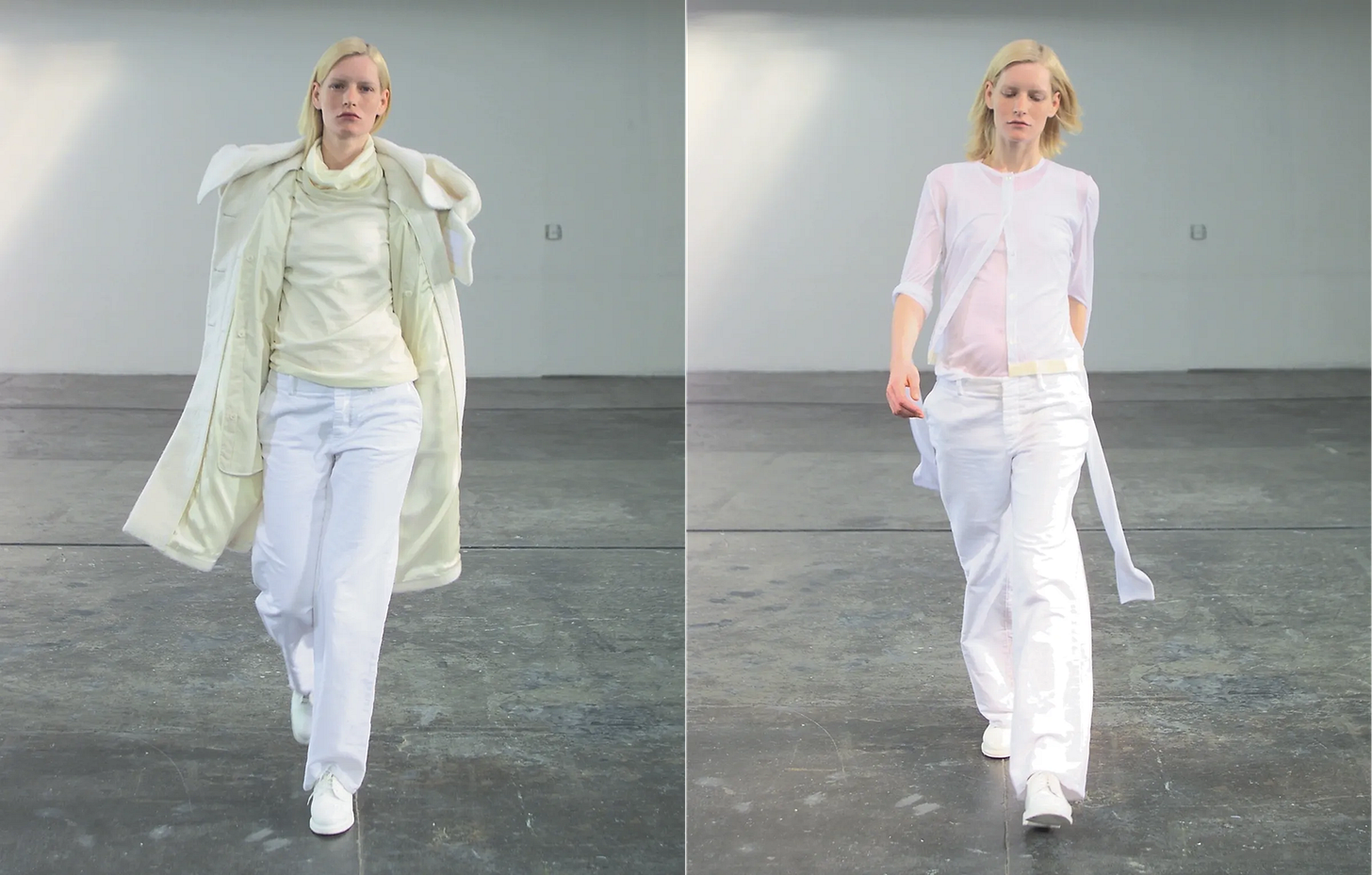Branded CD cases, iPods, and the daily newspaper: Offline media as your new favourite accessory
And it’s more than just nostalgia bait
For my email readers: there is a lot of content here (graphs, photos, videos) and the whole piece goes beyond substack’s email length limit. So! I would recommend reading in your browser if possible.
About two years ago, I flippantly wrote a substack post about upcoming trending accessories, with wired headphones and the koss porta pros being just one accessory trend in a list of many. I didn’t think much of it at the time, likely flagging it in my own head as a slightly performative styling choice — tbh the same thought I had about people who collected arctic monkeys and lana del rey records in highschool (it was 2013 and peak tumblr).
But in 2025 and with the media landscape we find ourselves in, I can now see the wired headphones and the other uses of ‘less advanced’ physical and offline media (and it’s inevitable use in our outfits) as a growing necessity — and perhaps even a subtle way for people to take back their power (more on that later).
It started with one of my favourite ig/tiktok follows: mymomsaidkatya, who used to do alt/diy fashion content but has recently shifted to sharing her life as she moved to a small town in Finalnd, is expecting her first baby, and yes, her very practical and non-performative use of analogue media. Videos of her life, intertwined with her thrifting cds and playing them from a cd player in her backyard while doing yard work. Through watching this, my algorithm started showing me other people doing the same, explaining their CD collections, buying their kids VHS tapes to give them a ‘90s summer’, and collecting DVDs of their favourite shows.
 Tiktok failed to load.
Tiktok failed to load.Enable 3rd party cookies or use another browser
And yes [insert obvious lightbulb moment] it absolutely makes sense to just buy the DVD of your favourite show or the CDs from your favourite musician. Not only does it save you the frustration of following your favourite show from one streaming platform to another, but it’s (likely) far more sustainable too by using less water and energy than the massive data centres behind streaming. There’s also the act of being able to watch or listen offline, without the risk of falling back into your phone every time a notification, text, or Teams message pops up that you *have to* reply to. And perhaps most importantly in 2025, buying a physical copy (whether a DVD, CD, or vinyl) lets you directly support the artists and creators you care about.
If owning and using physical media becomes a more practical and common choice, this behaviour is likely to start shaping what we see in fashion.
I’ll first take you through a few examples of how this has already manifested, and then my predictions for future trends and collaborations.
#1 Books are probably the most obvious version of this trend and have been covered extensively, so I’ll keep this section brief (and confined to my favorites).
Brands leaning into the rise of booktok and reading during the pandemic (I know I know - positioning reading as a trend makes me want break my own nose) led to activations like Miu Miu’s Summer Reads pop up both in 2024 and again in 2025.
We’ve also seen Johnathan Anderson regularily bring in literary references to his work, one example being printing Clive Bell’s work on his JW Anderson SS25 runway pieces.
We also have one of the first previews of Johnathan’s Dior including tote bags printed with Bram Stoker’s Dracula and Charles Baudelaire’s Les Fleurs du Mal.
#2 Brandon Maxwell recently sent models down the runway with a copy of the New York Times at his NYFW SS26 show.
The gesture seems to frame reading a physical newspaper as a luxury in itself and acted as a signal that the Maxwell woman has the time, space, and curiosity to stay informed.
#3 Legacy music devices are a little less represented in capital-F Fashion than books, but they’re showing early signs of becoming an important trend.
Say what you want about Coperni, but the cd player swipe bag was a crazy good edition to their SS24 collection that it is still being talked about today.
Platform Offtrend HQ discussing legacy music devices like iPods and CD players being a trend that they would like to see make a comeback.
iPod’s becoming a part of bag charm hauls and set-ups.

 Tiktok failed to load.
Tiktok failed to load.Enable 3rd party cookies or use another browser
We can also see searches for vintage (looking) headphones like the Koss Porta Pro go from an average of 1,000 to 12,000 monthly searches on Google in the past year.
And of course, the growing interest in terms like ‘iPod aesthetic’ and ‘iPod outfits’ on platforms like Pinterest — showing a mix of new editorial/experimental content with the tech, as well as photos plucked from the 2000s iPod peak. While an iPod doesn’t fit into the same bucket of physical media as (say) a book, a newspaper, or a CD player, I think that for gen-z it still represents a detachment from their everyday online media.
Now time for some predictions:
With the growing interest in physical and offline media, both within fashion (as covered in this article) and outside of it (worldwide google searches for ‘where to buy a CD player’ are up 12% in the past year) I wouldn’t be surprised if the next Kith or Brandon Maxwell show were not wearing New York Times and vintage wired headphones (respectively) but instead had branded CD cases that people could use to carry around their actual physical CDs and (hypothetically) play in their Sony x Miu Miu CD players.

Or, at the very least, a brand recreates the Helmut Lang 1998 invites that were printed on CD cases.
In conclusion
So, just to summarise and go back to the original question, how does the resurgence of physical media help us take back our power?
Actually owning our stuff in a world where we are increasingly financially tethered to subscription-based models.
Being able to actually disconnect. Like listening to a CD or watching a movie and not being distracted by notifications. (Not to mention the ability to consume without being tracked and targeted by further content or ads).
Finally, rejecting the idea that newer automatically means better. Embracing older or outdated formats can feel like a small but meaningful act of resistance against the never-ending pressure to buy and consume. (For example, I’ve personally seen a lot more excitement online over the Sony DR-11 than a neuralink chip that can feed you content 24/7.)
These reasons — in addition to the broader shifts we’re already seeing in how people are interacting with physical, offline, and “less advanced” technologies, my *guess* is that this behaviour will continue to grow.
And, of course, because we’re talking about fashion, there’s always a catch. These gestures (burning CDs, wearing vintage headphones, buying newspapers, carrying books in clear tote bags) can absolutely be personal choices, but should they continue, they will also inevitably be co-opted by brands as marketing opportunities. Would I want some sort of limited-edition Prada cassette player? For sure. But would I also be perfectly fine getting one at a thrift shop? Also yes.



